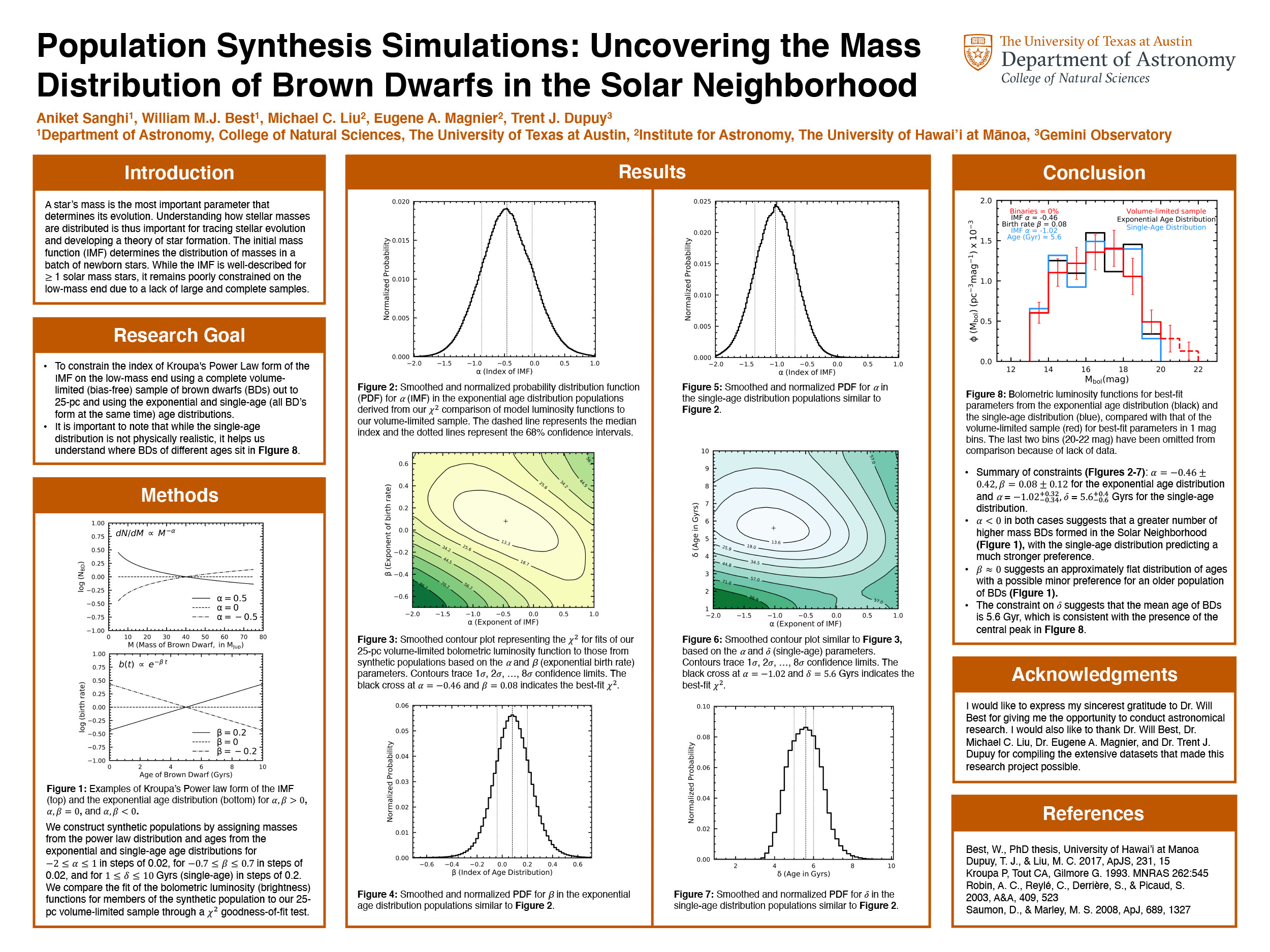Aniket Sanghi, William M.J. Best, Michael C. Liu, Eugene A. Magnier, Trent J. Dupuy
Brown dwarfs are substellar objects more massive than planets and less massive than hydrogen-fusing stars. They occupy a mass range of 13 – 80 Jupiter masses and cool through their lifetime. This continuous cooling implies that a younger, less massive brown dwarf can have the same temperature and brightness as an older, more massive brown dwarf. Thus, it becomes exceedingly complex to utilize observational methods (photometry and spectroscopy) to calculate a brown dwarf’s physical properties, such as mass, age, metallicity, etc. This hinders our understanding of a brown dwarf’s evolutionary path. A statistical approach that can overcome this challenge is by modeling populations of brown dwarfs characterized by an initial-mass function (IMF). The IMF describes the number of stars formed at different masses. Given an input IMF and age distribution model, a population-synthesis simulation outputs the luminosity and temperature for a synthetic population of brown dwarfs. Comparing these with observations helps constrain the IMF of the population as well as determine the brown dwarf formation history of the Galaxy. The IMF is constrained utilizing a volume-limited sample of brown dwarfs and different age distribution models using the chi-squared goodness-of-fit test. We find that the best-fit parameter combinations imply that brown dwarf formation in the Galaxy favored higher mass brown dwarfs. The constraint also reflects a relatively flat distribution of ages with a minor preference for an older population of brown dwarfs. Moreover, we find that some age distributions constrain the IMF more strongly than others. These results are consistent with previous studies that utilized smaller observational samples of brown dwarfs.

Comments
Your poster and explanation were very easy to follow and I found that I learned so much, thanks for this! —Eryn Acevedo
Thank you for taking the time to read it! Happy to know! —Aniket Sanghi
Thank you for sharing your research – great work! I liked the clear design in how you’ve made a comparative visual analysis as your results. —Hannah S Saji
Thank you for the feedback! —Aniket Sanghi
I learned a lot from your poster and it was easy to understand! —Ivi Pretzantzin
Great to know! Thank you! —Aniket Sanghi
Excellent poster! Very easy to follow. —Olivia Biehle
Thank you, Olivia! —Aniket Sanghi
Great poster — very clean design. Out of curiosity, how did you get connected with this line of research? —Rob Reichle
Thank you! Last semester, I was looking to engage myself in Astronomy research and was given the opportunity by Dr. Best by just asking around in the department. He had assembled a really good dataset using which a lot of science could be done and I started working on running simulations and obtaining results! The line of research directly stemmed from Dr. Best’s Ph.D. dissertation as well as current issues in the IMF low-mass regime. —Aniket Sanghi
Very interesting project, and well-designed poster! What are the next steps for building on this project — any future directions? —Jeanette Herman
Thank you for your feedback! In the coming months, we plan to test the Lognormal Form of the IMF (besides Kroupa’s Power Law). We will also be using another evolutionary model, the BT-Settl group of models (besides SM08). We aim to obtain new constraints, compare the two forms of IMF, and see which evolutionary model distinguishes between the two forms of IMF better. —Aniket Sanghi

